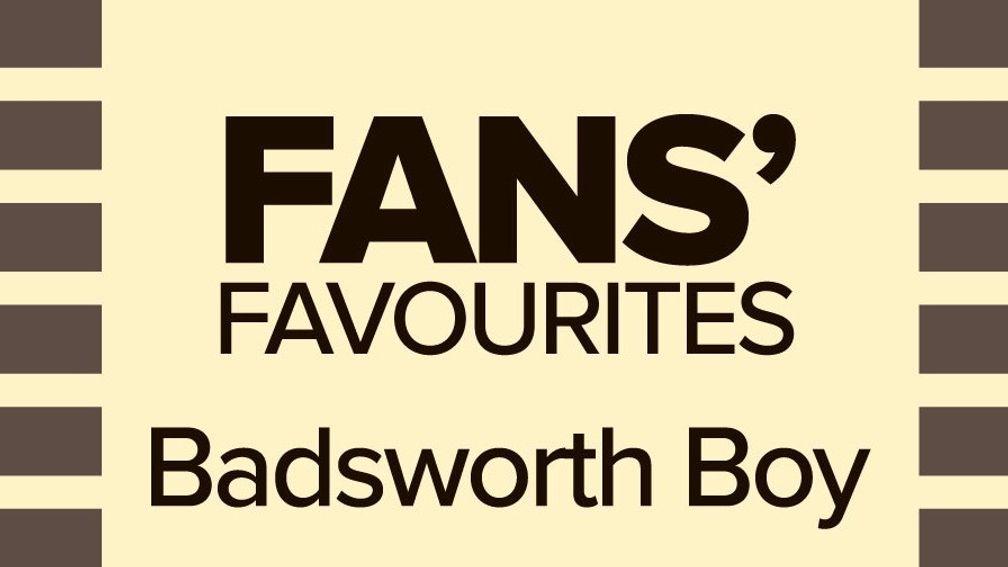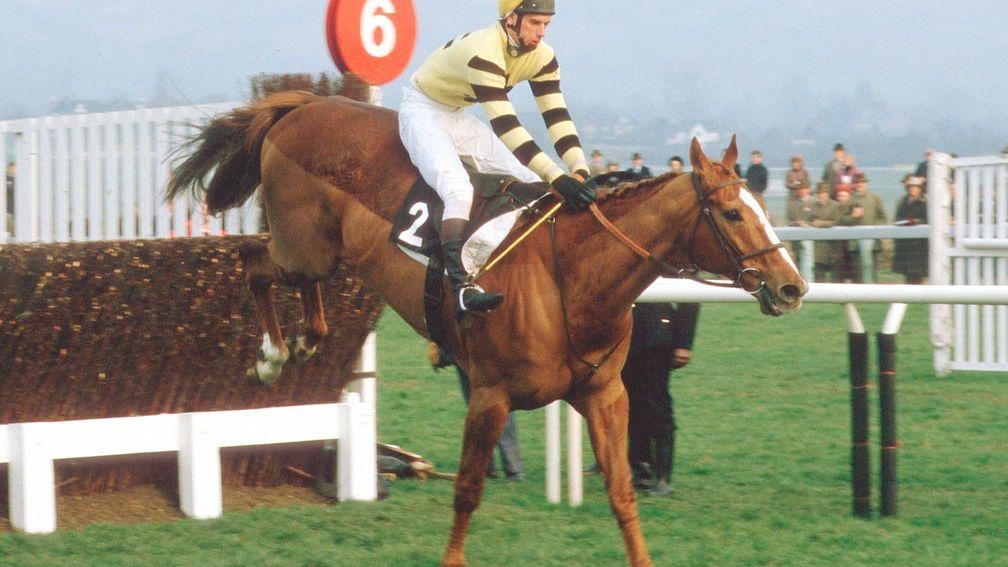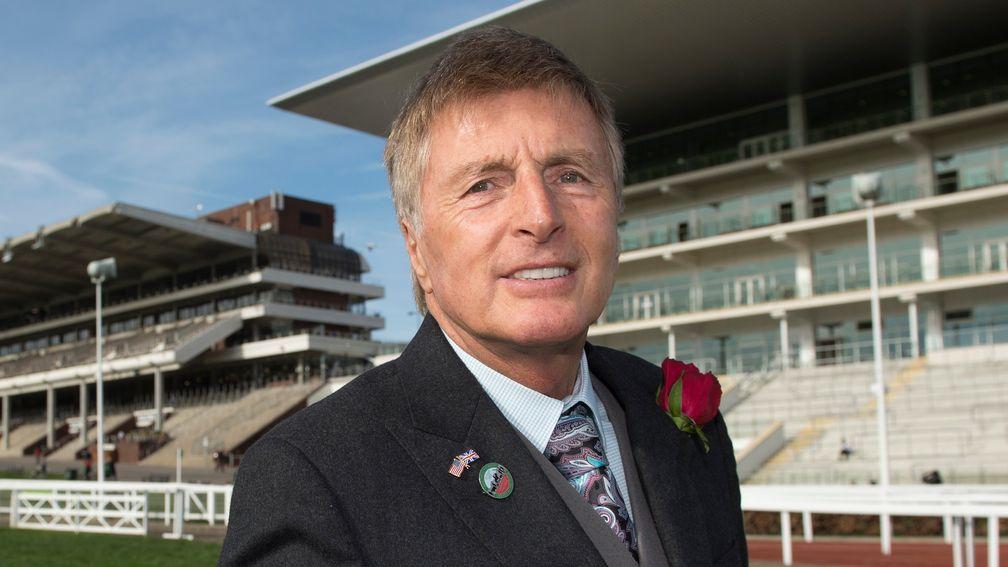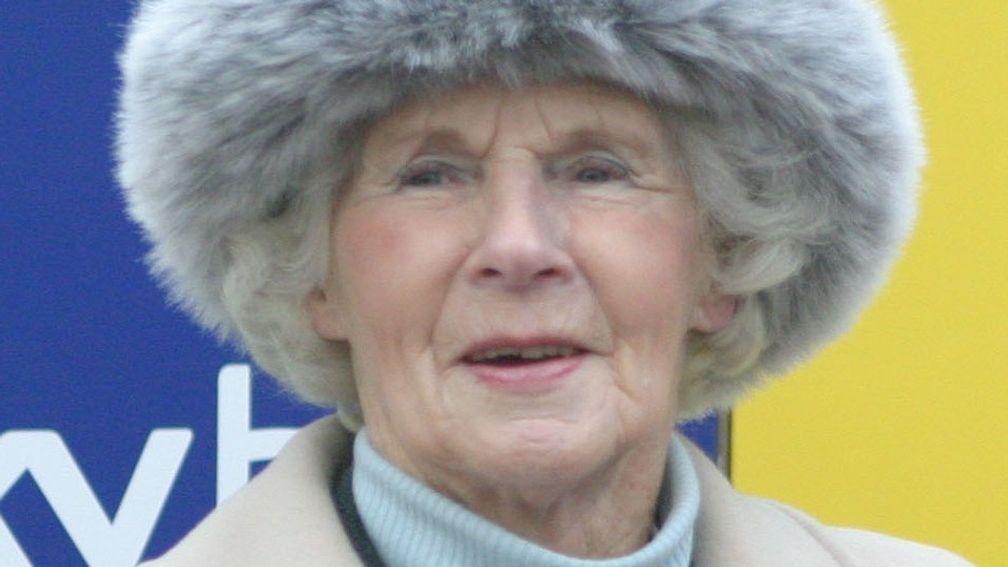Badsworth Boy: untouchable Champion Chase hat-trick hero who set the bar so high

If Altior can roar back to his best form and complete a hat-trick in the Queen Mother Champion Chase a fortnight from now, he will be walking in the footsteps of a giant. Badsworth Boy not only stands alone as the sole three-time winner of Cheltenham’s two-mile championship, he accomplished the unique feat in such dominant style that he set the standard in the division for decades to come.
Twelve others have won the Queen Mother Champion Chase more than once – including modern titans like Sprinter Sacre, Master Minded and Moscow Flyer – but none has matched Badsworth Boy’s achievement of the mid-1980s.
While the Cheltenham Gold Cup roll of honour features a quartet with at least three victories to their name – and Al Boum Photo might soon make it a quintet – it has proved much more difficult to maintain that level of dominance in the two-mile division.

Badsworth Boy made it look easy, especially in his first Champion Chase in 1983 when he won by what used to be known as “a distance” – beyond 30 lengths. Michael Dickinson, his brilliant and meticulous trainer, later measured it as 36 lengths, and two subsequent ten-length wins meant the hat-trick was completed by a cumulative distance of 56 lengths.
At the time the Dickinson academy – started by Michael’s father Tony and later continued by his mother Monica – was the all-conquering powerhouse of British jump racing and, remarkably, Badsworth Boy’s jaw-dropping win was not the greatest feat of the 1983 festival. Just 24 hours later came Dickinson’s Famous Five, when his team of Bregawn, Captain John, Wayward Lad, Silver Buck and Ashley House monopolised the Gold Cup.
Inevitably, Badsworth Boy’s victory was pushed down to second billing and yet even now Dickinson is still in awe of what his two-miler did to a high-class Champion Chase field.
“I would urge anyone to watch his first Champion Chase on YouTube because it was the most devastating performance you’re ever likely to see,” he says. “The horses he beat won 102 races between them, and included two previous winners of the race, but you’ve never seen an easier winner. When they changed the camera angle turning for home he was 30 lengths clear. What was staggering was how well he jumped. He gained two lengths in the air time and time again.”
Jumping had not always been Badsworth Boy’s strong point, but stable jockey Robert Earnshaw did a lot of work in that department and was rewarded with his own place in history as the rider on board for the unique hat-trick.
“Robert was one of the best riders ever over a steeplechase fence,” says Dickinson. “I've never seen any jockey gain as many lengths in the air. He had a very subtle technique – about ten strides out he would take a very slight pull until he saw a perfect stride and then he’d quicken into the fence, nearly always meeting it perfectly.”
The twist with Badsworth Boy was his jumping technique, as he was inclined to keep low and brush through the top of the fences. Although he was a fast jumper, there was little room for error, which made him exhilarating to watch but also exasperating at times. One example came the year before his first Champion Chase, when he fell at the last in a handicap chase at Aintree on Grand National day with the race at his mercy.
“You almost couldn't school it out of him,” says Earnshaw. “He was over-confident really. I always tried to do all the racing between the fences so that going into a fence I could sit quietly and set him back on his hocks to measure the jump. At Aintree I took it up going to the last and he was going so well I didn't quite have enough time to get him back on his hocks and he just hurdled the fence a bit. I would have won the Aintree race, for sure.”
In the 1982-83 season Badsworth Boy was kept to the smaller tracks, winning four on the trot at Market Rasen (twice), Worcester and Stratford, but even Dickinson had doubts about going for the Champion Chase.
“Michael said he would run him if I wanted to ride him, but if I didn't think he'd get round he wouldn't run him,” recalls Earnshaw. “I said I'd love to have a go. It was going into the unknown a little bit because in those days the fences at Cheltenham were very stiff.”
The opposition was stiff too. Defending champion Rathgorman, also trained by Dickinson, shaded favouritism over his stablemate and the field also included 1981 winner Drumgora and prolific scorers News King and Artifice. They didn’t see Badsworth Boy for dust.
“I remember he brushed through one of the early fences and it was almost as if something clicked and he knew what he could get away with,” says Earnshaw. “That was the best thing that could have happened because all of a sudden it felt as if he respected those fences.
“He was a fantastic horse to ride because once you were in top gear you were really travelling and there was no coming back down again. He was unique really with the scope, the speed and the power he had. I was fortunate to ride several extremely talented horses but none of them had that power and size. He was like a tank. He was very exhilarating and you never knew quite what was going to happen.”
Peter Scudamore, who rode Artifice into second, was one of those left in awe. “You line up with hope, and Artifice was a very good horse, but the closest I got to Badsworth Boy was at the start,” he recalled. “He was way in front and just kept going. He must have beaten me a fence, I just didn’t see him. For the rest of us it was embarrassing. It was like we weren’t in the same race.”
Dickinson emphasises the quality of Badsworth Boy’s performance. “Not only did he win by 36 lengths, but look at what he beat. He beat two previous winners of the race, he beat Artifice and News King, who won 36 races between them. Artifice was placed at two Cheltenham Festivals and also in the race was The Mighty Mac, who came out the next season and won five on the trot, including two track records, and a race at the festival.”

That win alone would have earned Badsworth Boy a place in the pantheon, but there was so much more to come. In the days before a wide-scale Graded programme of level-weights races, Badsworth Boy regularly carried top weight of 12st 7lb in handicaps but mostly carried on winning regardless, as long as he stayed on his feet.
By the time he completed his Cheltenham hat-trick, he had won 17 of his 18 completed chases but had fallen three times and unseated once. The nagging sense of peril added to his appeal and across the north, where jump racing was so strong in those days, he drew an enthusiastic following at tracks like Wetherby, Haydock and Ayr.
He arrived at Cheltenham for his first title defence in 1984 as the 8-11 favourite and dominated the race again, winning by ten lengths from fellow northern challenger Little Bay. Artifice was third this time, beaten a more respectable 20 lengths, and Drumgora and Rathgorman were behind again.
The onerous task of staying at the top level for a third season has taken its toll on numerous dual Champion Chase winners – including Altior in recent times – and Badsworth Boy had his own struggles. In the 1984-85 season, when he was trained by Monica Dickinson following Michael’s switch to the Flat at Manton, the great champion was afflicted with muscular problems in his quarters and arthritis, which restricted him to two outings before the festival.
Getting him to Cheltenham was a notable training feat but he was far below his peak form and arguably fortunate to win. Irish star Bobsline, sent off 4-6 with the defending champion 11-8, was going ominously well when he fell at the third last, leaving Badsworth Boy to score by ten lengths.
Emphasising the scale of the achievement, Dickinson says: “He ran at Cheltenham for five years. By the time he won his last Champion Chase he was ten years old and obviously his aches and pains had got worse. My mother did a brilliant job to win with him that year.”

Badsworth Boy raced on for another two seasons but never hit the heights again and was retired at the age of 12. He enjoyed a long and happy retirement with Doug Armitage, one of his three owners along with Maurice Gibson and Ronald Howe, and received fan mail for many years, including a letter from the Queen Mother. He died in October 2002, aged 27.
Reflecting on Badsworth Boy’s standing, Earnshaw adds: “It was always ‘which is the best horse, Wayward Lad or Silver Buck?’ because they were the Gold Cup horses. People never really asked me to compare Badsworth Boy with them and even I didn't give him quite the same credit at the time. He tended to get overlooked quite a lot. Looking back, he was one of the best horses I rode.”
Dickinson presses the case more forcefully. “If I’d trained Silver Buck a bit better, he should have won three Gold Cups, and Wayward Lad won three King Georges. We had some really terrific horses but you’d have to say Badsworth Boy was the most dominant of his opposition.” Rhetorically, he adds: “When was the last time a championship race was won by 36 lengths?”
And finally Dickinson gives the ultimate seal of approval. “He was the best jumper I trained,” he says. That is quite some accolade.
More from our Fans' Favourites series:
Might Bite: 'He's a Grade 1 Mad Moose' - and that's his owner speaking!
Cue Card: the fascinating rags-to-riches tale of racing’s most popular racehorse
Faugheen: why the Machine will be a 'very, very hard horse to replace'
La Landiere: the super mare who went from forgotten to fondly remembered
Un De Sceaux: 'You're going to go a million miles an hour into a fence – do not move'
Speredek: the gallant front-runner who wore his heart on his sleeve
Long Run: the electrifying star in a golden age of chasing
Lil Rockerfeller: versatile, talented and always ready to give it his all
Reve De Sivola: the Long Walk king with the heart of a lion
Politologue: Hales on why the Tingle Creek king is the best jumper he's owned
Yorkhill: the efforts to revitalise an enigma wrapped in a mystery
Simply Ned: the public's outsider, a flamboyant, attractive, tremendous jumper
Prince Of Arran: 'horse of a lifetime' who never disappoints at Flemington
Roaring Lion: the dazzling champion with the courage to match his speed
Sea The Stars: a horse of a lifetime who enjoyed the most perfect of seasons
Battaash: the speed machine who is the pride and joy of trainer and groom
Overturn: from Plates to Cups to Champion Hurdles; a true warrior on all fronts
The Weekender is out every Wednesday and is available at all good stores. You can also download the edition from 9pm on Tuesday evening
Published on 3 March 2021inFeatures
Last updated 09:49, 3 March 2021
- Government says it is working 'at pace' to have white paper measures in force by the summer
- 'The only thing you can do is lie fallow and regroup' - Meades to return with scaled-back operation following blank period
- The Gambling Commission has launched its new corporate strategy - but what are the key points?
- 'It was tragic it happened to Paddy but it was a good thing for the jockeys who followed - good came out of bad'
- Acquisitions, exits and retail resilience - what we learned from Flutter and 888's results
- Government says it is working 'at pace' to have white paper measures in force by the summer
- 'The only thing you can do is lie fallow and regroup' - Meades to return with scaled-back operation following blank period
- The Gambling Commission has launched its new corporate strategy - but what are the key points?
- 'It was tragic it happened to Paddy but it was a good thing for the jockeys who followed - good came out of bad'
- Acquisitions, exits and retail resilience - what we learned from Flutter and 888's results